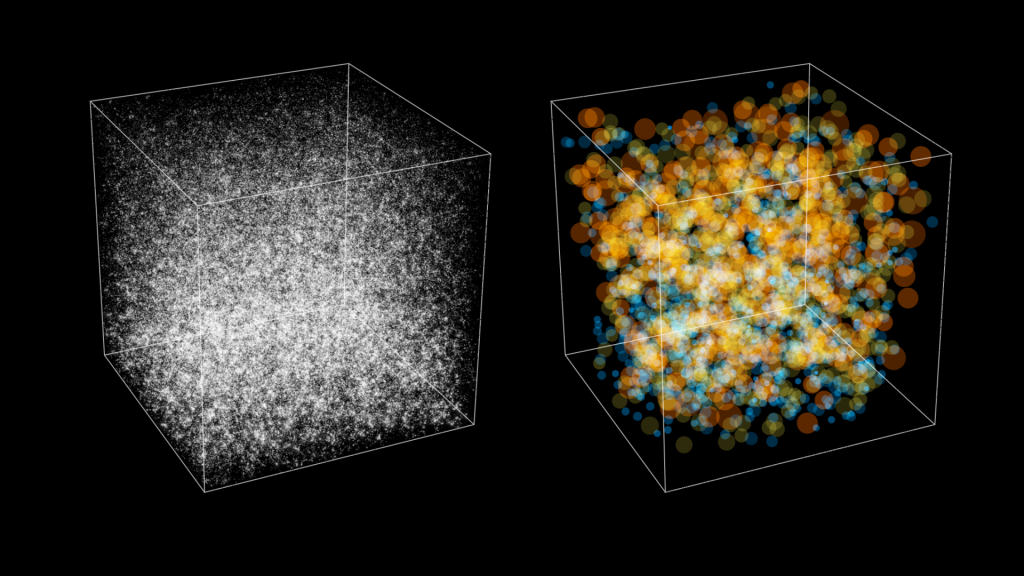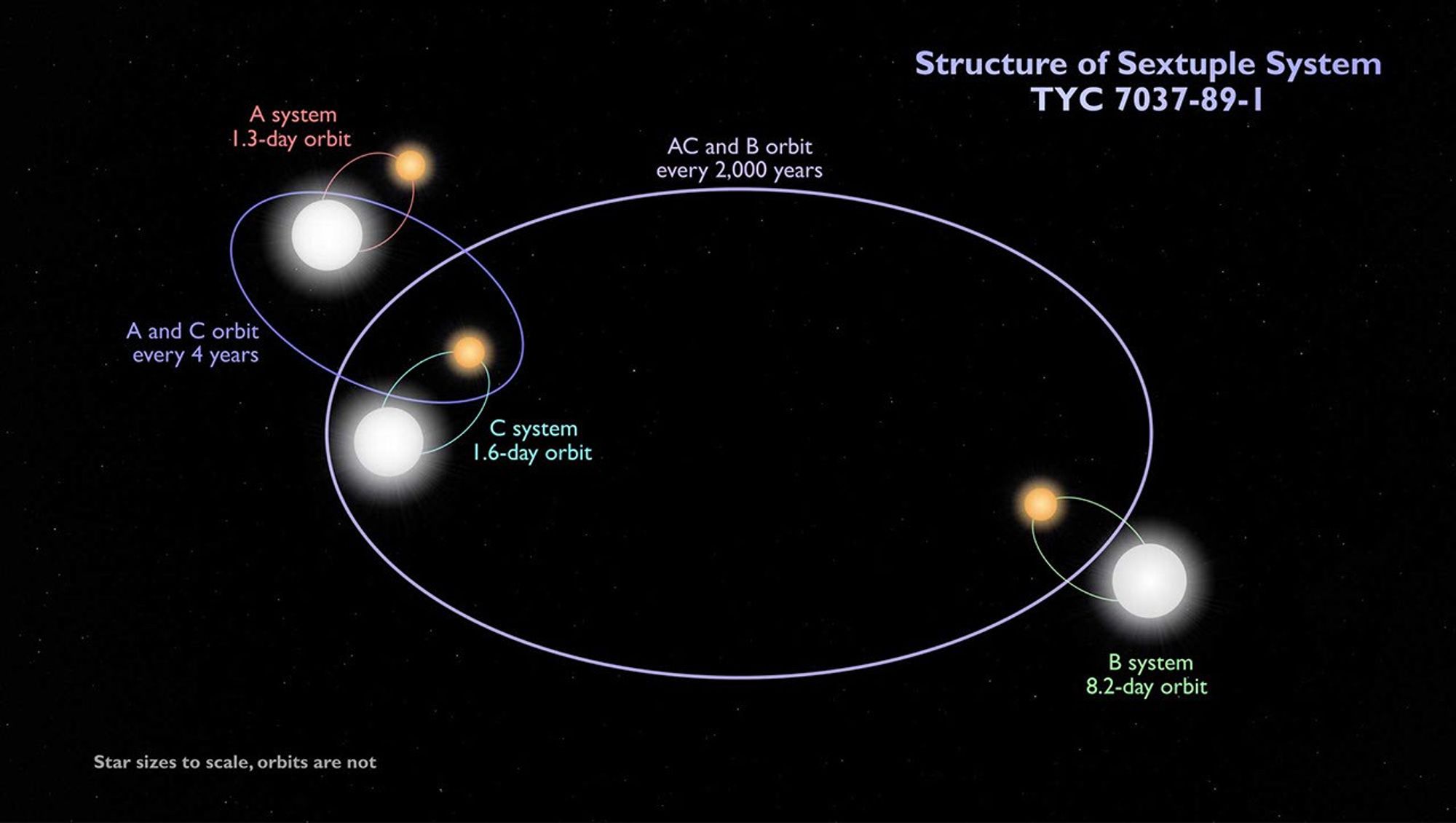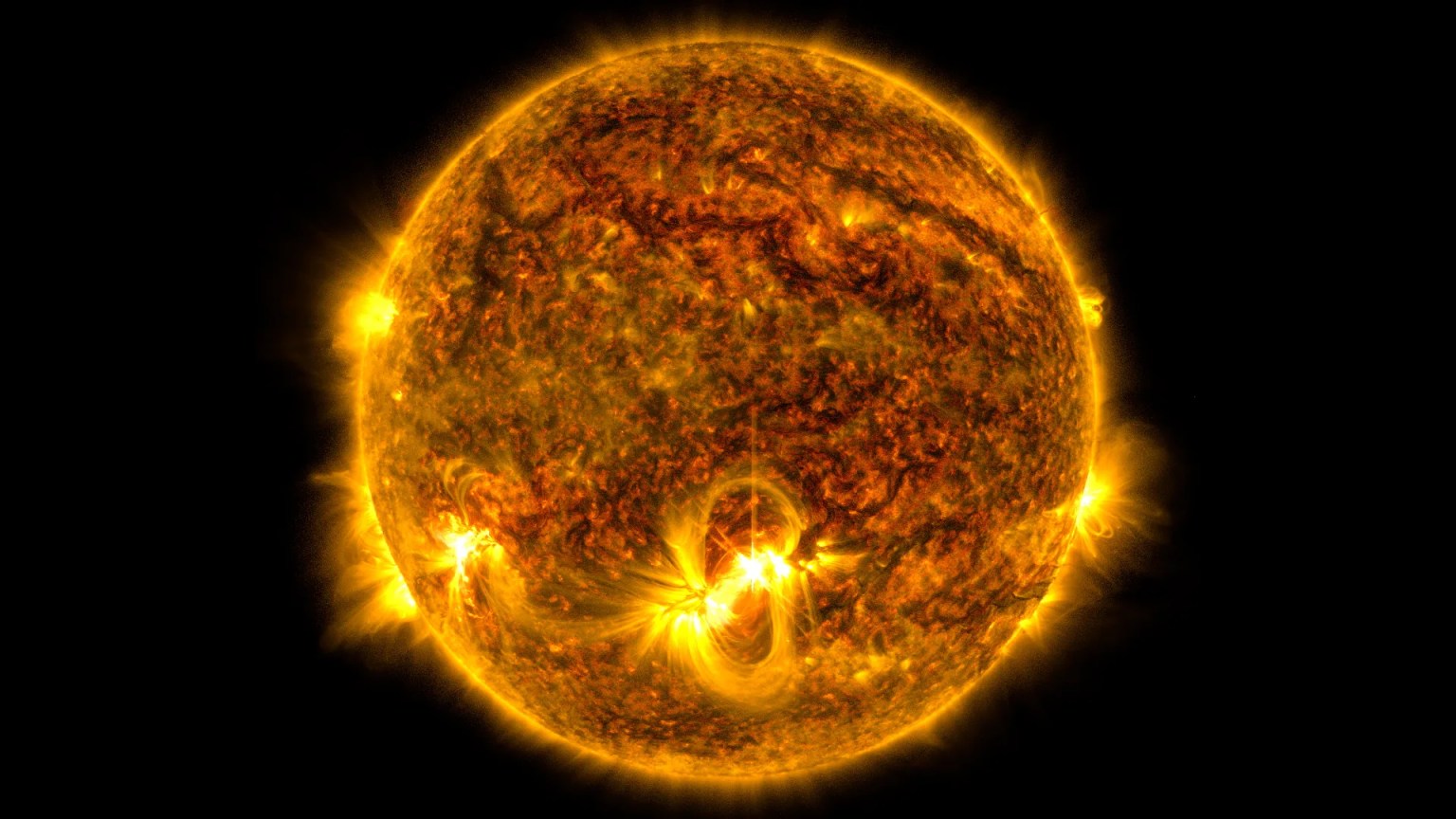Other Stars, Other Worlds
Six Stars, One System
Two-star systems are quite common in our galaxy. Even systems with three stars are not especially rare – our nearest stellar neighbor, Alpha Centauri, is just such a trio.
But we enter much more rarified territory if we look some 1,900 light-years away to find TYC 7037-89-1. It’s a system of six stars, all gravitationally bound to one another. From Earth’s vantage point, one other quality allows this system to notch an observational first: Each of its three pairs of stars cross the faces of their companions. In other words, all three can put on a dazzling show for astronomers of frequent and multiple eclipses.
The details of this binary star ballet are worth noting. For two of the pairs, the time it takes for their companion stars to orbit each other is about the same: 1.5 days. These two pairs also form a third gravitational relationship, locked in their own mutual orbit of four years.
And what about that third pair? These two stars also orbit each other, in this case every eight years, and together they trace yet another, wider orbit around the other two pairs. The orbit is wide indeed. It takes 2,000 years to complete.
How can six stars wind up in such an intricate gravitational dance? The formation history of this system is unknown, but one possible explanation is that they were all born together, in a single (and very active) star-forming region. While the offspring of such stellar nurseries typically disperse, these possible siblings might have stayed together, maintaining their gravitational relationships even as they matured.


































